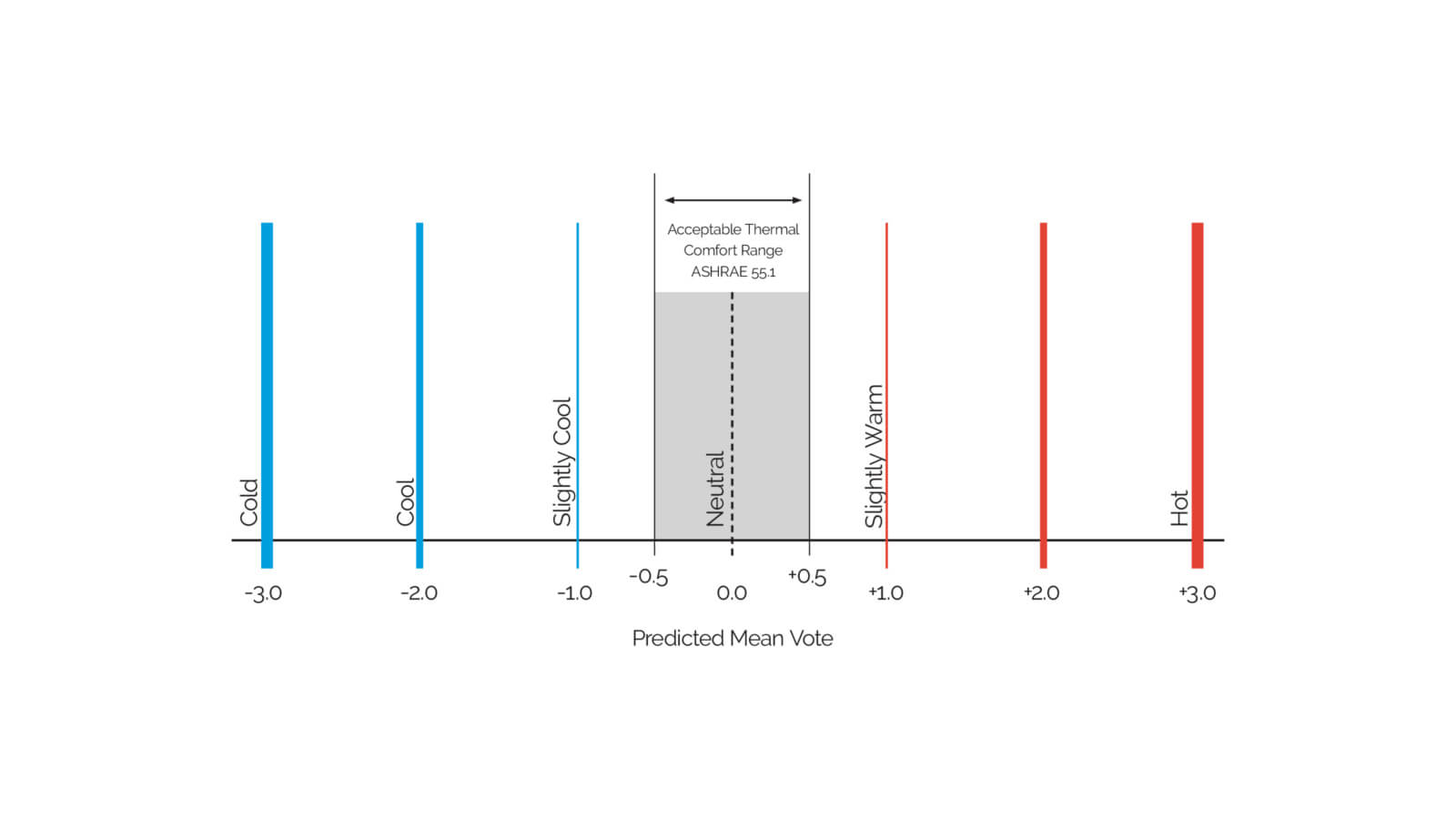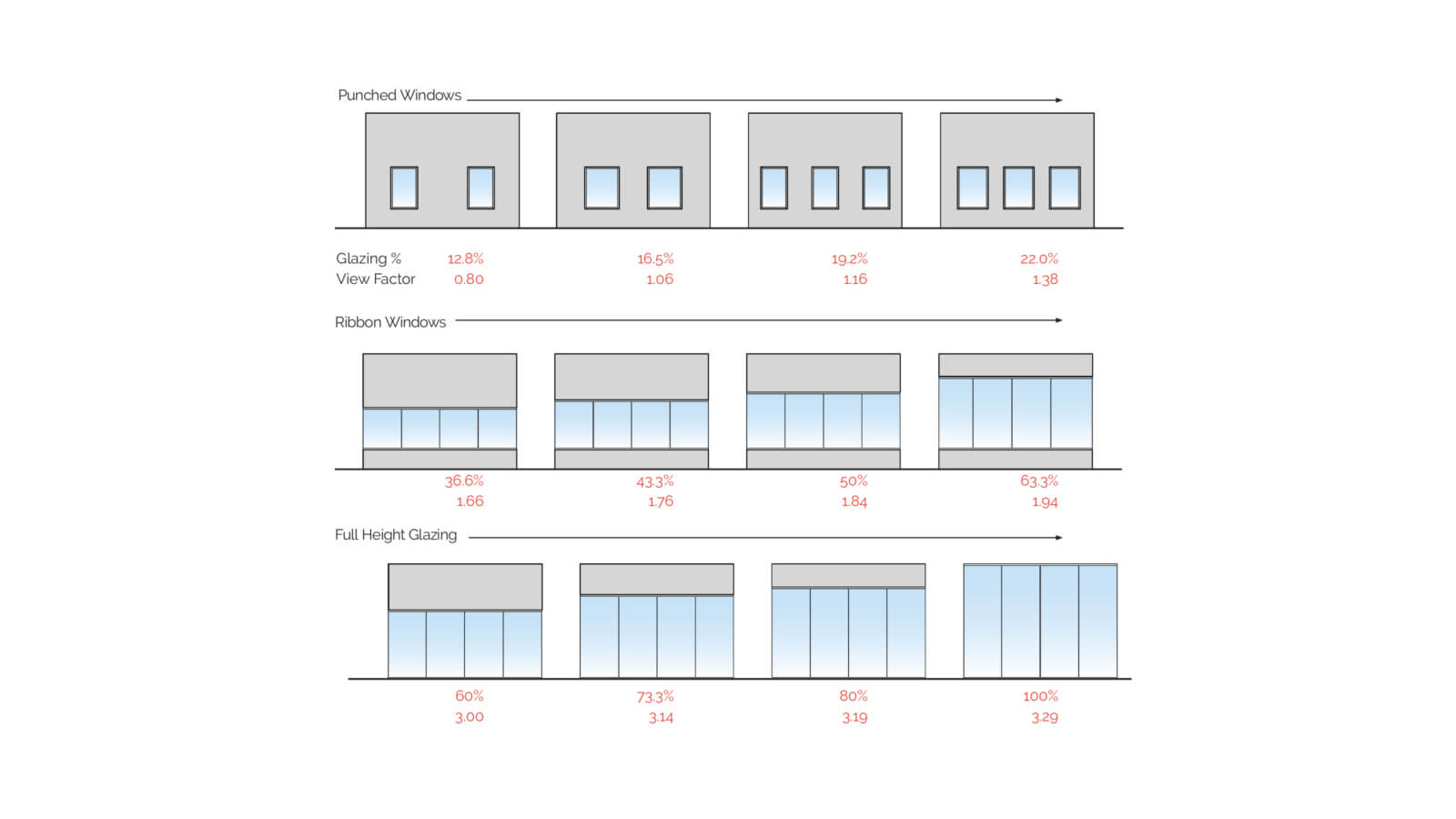
Thermal comfort in buildings is primarily controlled by mechanical means, allowing these systems to compensate for shortcomings in envelope performance. However, because of the increased focus on creating healthy environments for occupants and reducing building energy demands, this model is due for reconsideration.
Blog Posts
REFERENCES
TEAM
Challenge
A better understanding of how thermal comfort in the winter is affected by different glazing performance criteria and geometries allows architects to make informed decisions when selecting a glazing scenario. This ensures a comfortable environment for occupants without the need of supplemental perimeter heating strategies.
Solution
Two factors must be considered when designing a glazed opening in cold climates: radiant discomfort and downdraft discomfort. The effect of each correlates to the glazing U-factor and window geometry. This becomes particularly critical when comparing the effects that room-side low-e coatings can have on thermal comfort and risk of condensation.
This work has culminated in the Glazing and Winter Comfort Tool, a simple, publicly available, online tool that allows designers and engineers to study how different glazing scenarios impact occupant comfort, thus helping eliminate the potential need for supplemental perimeter heat.














